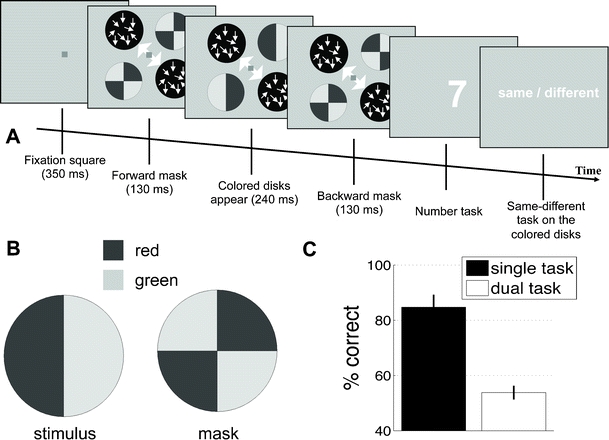Fig. 4.

Experiment 2: Task and results. (a) The task used in Experiment 2 was very similar to that used in Experiment 1, with the difference that in the uncued locations we presented colored stimuli with no motion. The colored stimuli were red–green circles, masked by colored pie circles with alternating colors. The durations of the stimuli were chosen individually for the same subject, but the forward and backward masks had equal durations that always produced a total duration of 500 ms for the stimulus presentation. (b) The stimuli placed in the uncued diagonal are shown. Subjects’ task was to disregard the masks to indicate whether or not the two circles placed in the uncued locations had the same configuration (i.e., whether the left sides of the circles had the same color). We used these stimuli because it had previously been shown that their identification requires attention (Lee et al., 1999; Li et al., 2002). (c) Subjects were able to perform the task on the uncued color stimuli when they paid undivided attention to them, as indicated by the “single task” bar. However, when subjects were required to simultaneously perform the number task from Experiment 1, their performance was not better than chance (“dual task” bar), suggesting that the number task does not leave attentional resources available to “spill” to the uncued locations
